Conservation Success in the Sahara!
Posted in: Baby Animals, Conservation, Goings on
In April, Safari West welcomed two new baby scimitar-horned oryx to our herd! These births come at a time when this special antelope is in the global spotlight—recent successes in a massive conservation effort have resulted in these desert specialists successfully regaining a foothold in the wild, where they had been absent for decades.
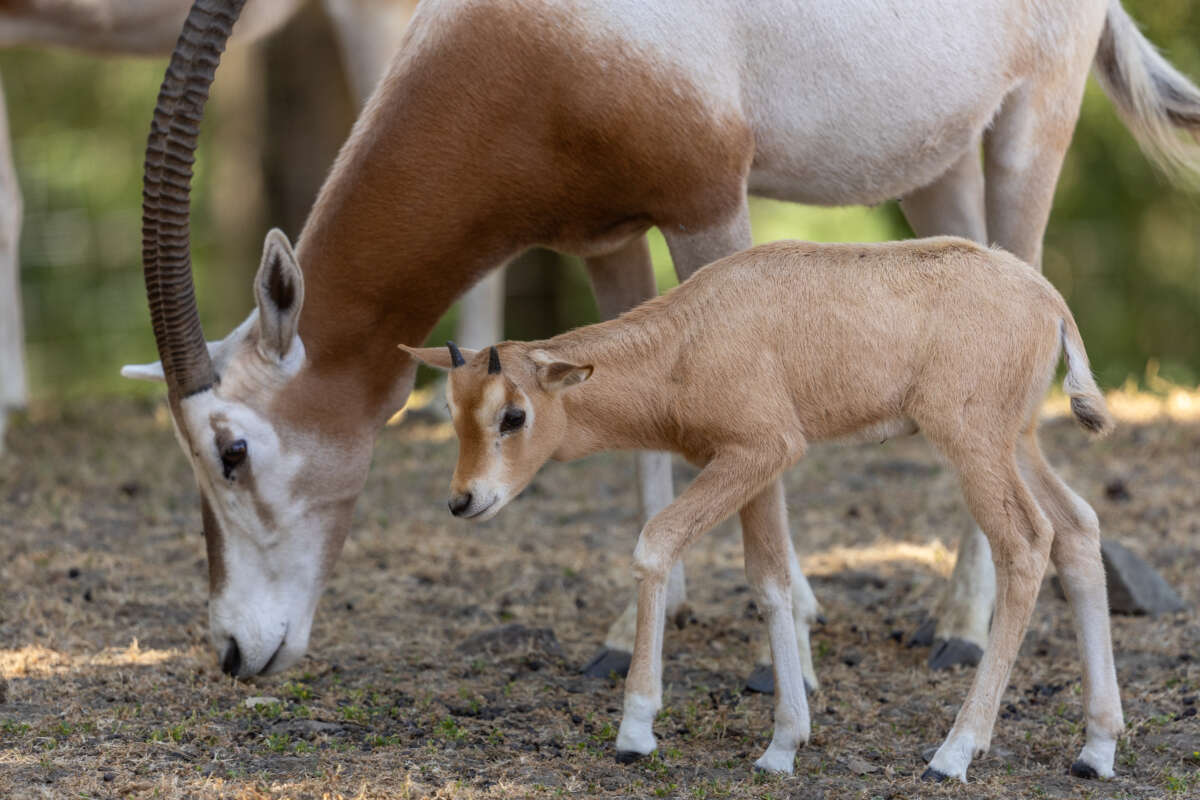
The scimitar-horned oryx is a specialist among specialists, and its domain of mastery is the Sahara desert in northern Africa. Outwardly, their white fur is excellent at reflecting heat and their long, thin, curved horns act as heat-diffusing brain radiators. Inside their bodies is an amazingly efficient water retention system that gives the ability to go for months without drinking standing water, and a complex circulatory system and metabolism that allows body temperatures to exceed a whopping 115°F while the head and brain stay cooler. But even with all of these incredible adaptations, the desert is a harsh and unforgiving place. Any additional pressures can be enough to tip the scales and change the livelihood of a scimitar-horned oryx from difficult to impossible.

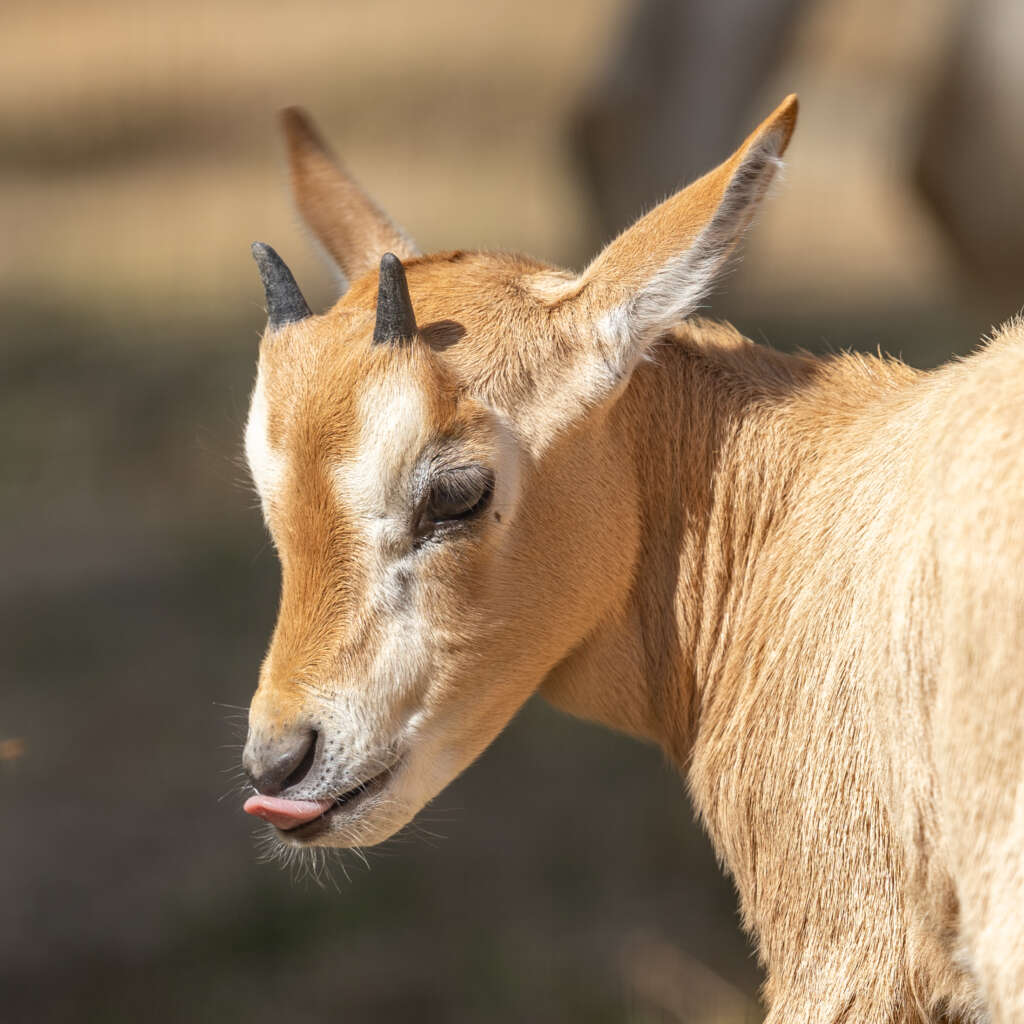
Additional pressures came to the Sahara in the form of human expansion and conflict. As humans and their livestock used more of the limited vegetation and water in the desert, less was available for animals like the scimitar-horned oryx. These antelope were also prized for their meat, hide, and horns, and were hunted unsustainably during periods of social unrest. From the 1930s to the 1980s, wild populations of scimitar-horned oryx steadily dropped from the tens of thousands to the hundreds. The last time scimitar-horned oryx were seen in the wild in the 20th century was the late 1980s. For about 25 years, they were considered “Extinct in the Wild”, only existing in zoos and preserves. But within these zoos and preserves, including Safari West, a healthy population of a few thousand scimitar-horned oryx lived on.
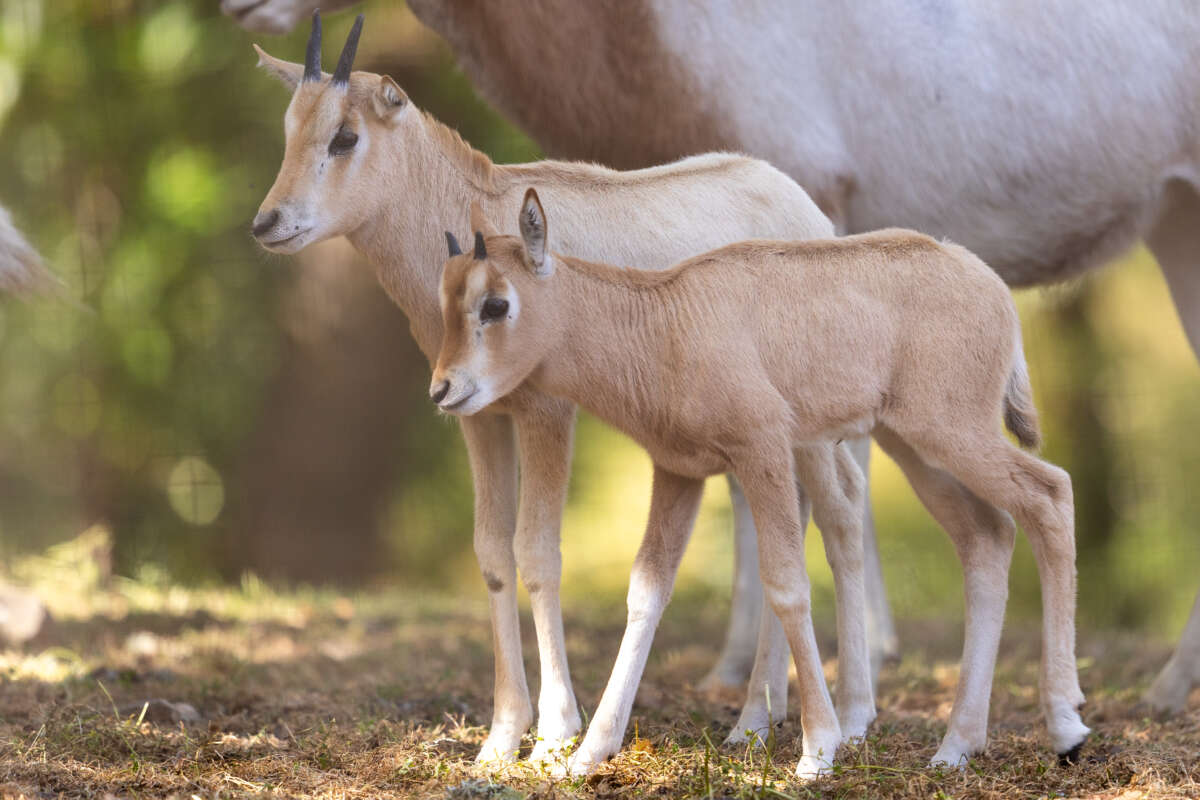
After many years of planning and organization, in 2016 the first group of 25 scimitar-horned oryx were released back out into the wild in Chad. Thankfully, this initial release was a success, and in the following years more oryx were brought to Chad and released into the wild, and these wild oryx started having babies, resulting in the first wild-born scimitar-horned oryx in more than 30 years!
Fast forward eight years, and scimitar-horned oryx appear to be thriving in the wild. A total of 285 individuals were released into the wild from 2016 – 2022, and between this and new wild births, the wild population is currently about 500 – 600 individuals! Given the stability of this population and the increasing population size, the International Union for the Conservation of Nature (IUCN) have reassessed the conservation status of this species, and reclassified the scimitar-horned oryx from “Extinct in the Wild” to “Endangered”.
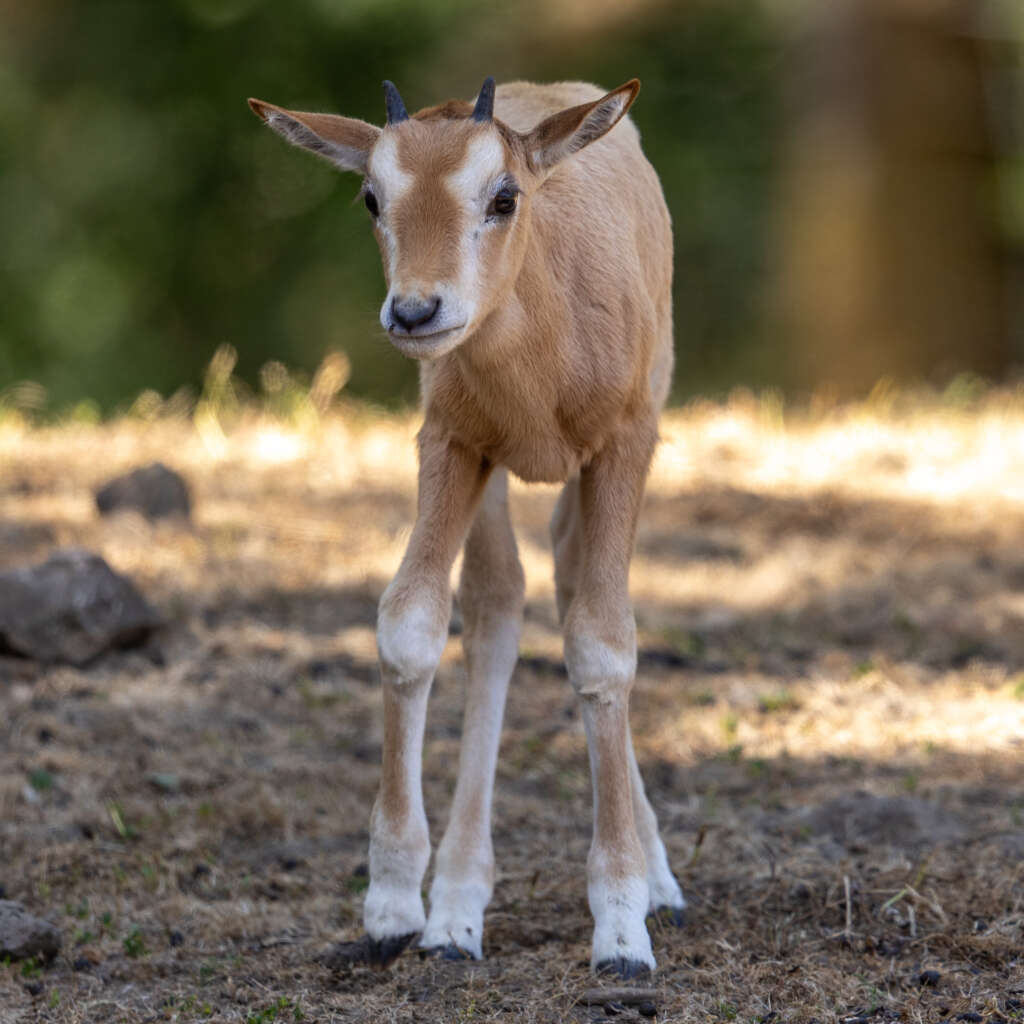
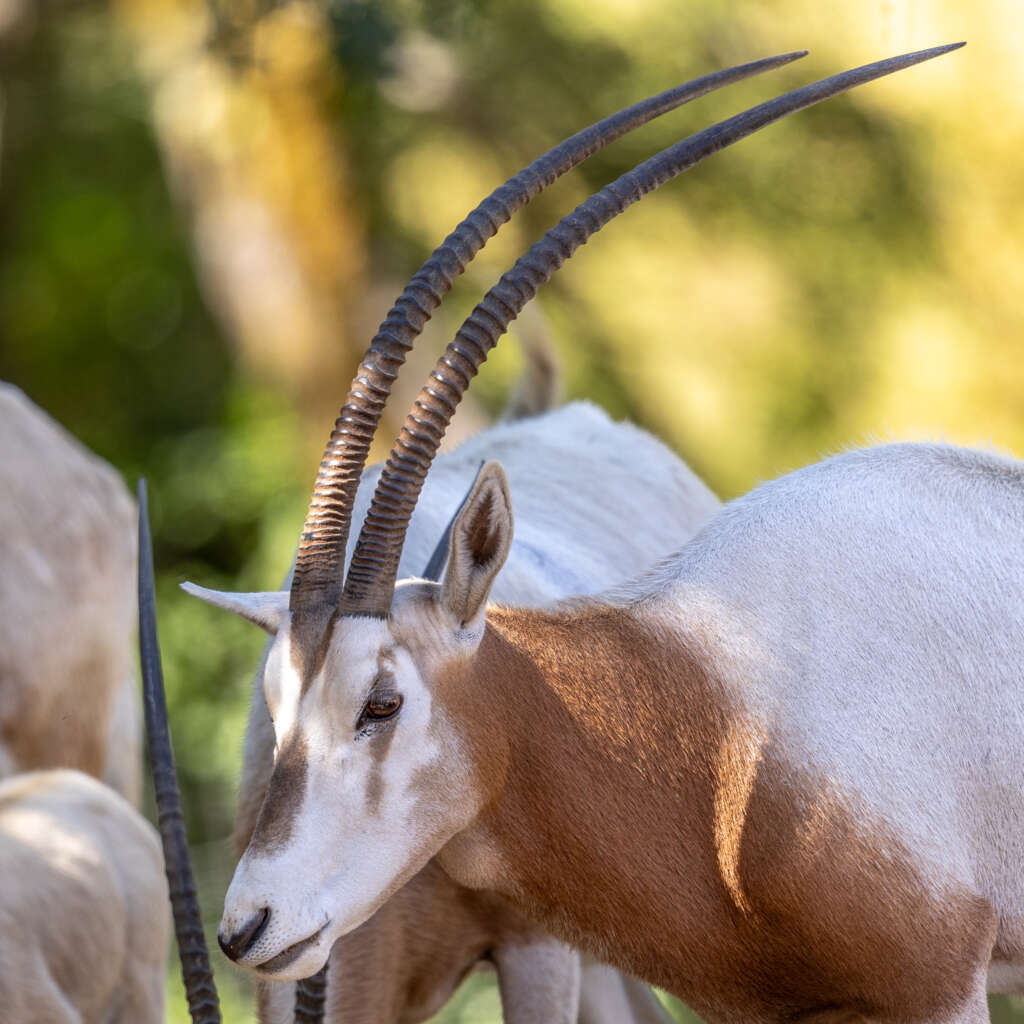
This reclassification is especially impressive, because there is a conservation status in between “Extinct in the Wild” and “Endangered”, called “Critically Endangered”. This is the first time ever that the IUCN has skipped over “Critically Endangered” when reclassifying a species that is extinct in the wild, and speaks to the amazing success of this conservation initiative.
Scimitar-horned oryx have been with Safari West since the beginning—they are one of the antelope species that Peter Lang brought with him when he moved to Sonoma County and the idea of Safari West started to take shape. They are one of the best representatives of our mission: giving a voice to the amazing conservation stories of incredible animals. Our two newest babies remind us of the baby scimitar-horned oryx once again being born in the wild, due to the hard work of zoos and conservation organizations across the world. Conservation can be difficult to read about sometimes, but success stories like this one show us that the work is worth it!
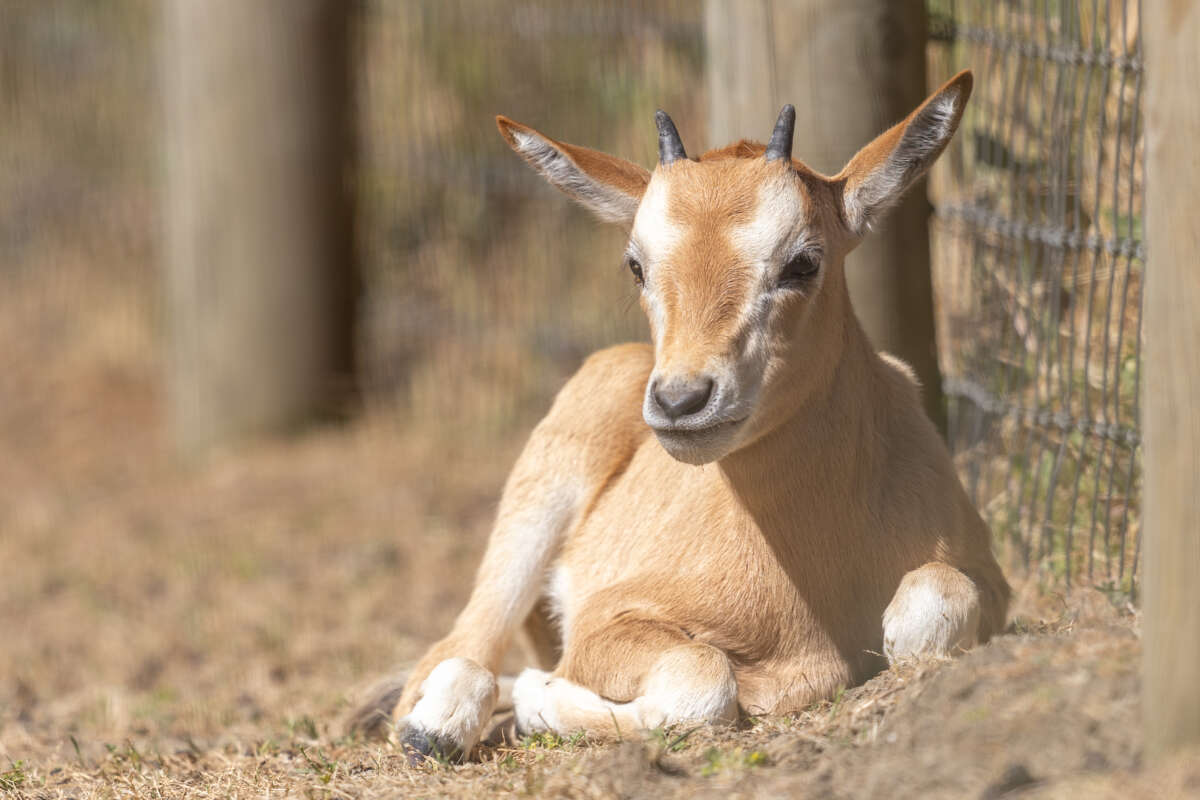
If you would like to support the ongoing conservation of Sahara specialists like the scimitar-horned oryx, look to the amazing work of Sahara Conservation at https://saharaconservation.org.
Photo Credit: Mark Pressler


